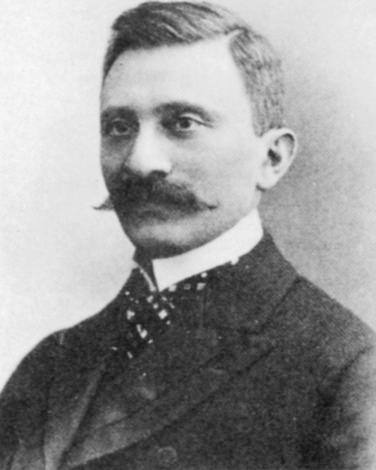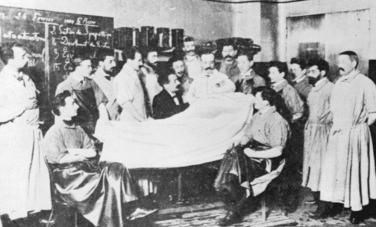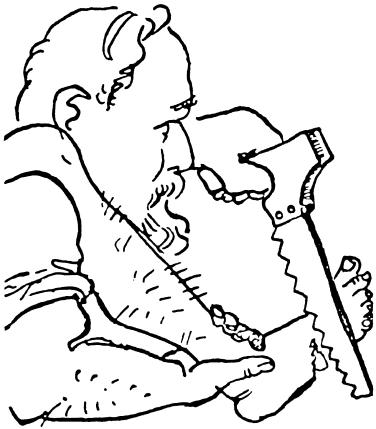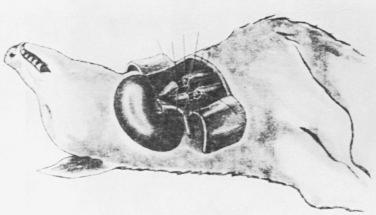Physical Address
304 North Cardinal St.
Dorchester Center, MA 02124
The modern period of transplantation began in the late 1950s, but two earlier periods of interest in clinical and experimental transplantation were the early 1950s and the first two decades of the 20th century. Hamilton provides a bibliography of the history of organ transplantation. Table 1.1 summarizes landmarks in kidney transplantation.
| 1902 | First successful experimental kidney transplant |
| 1906 | First human kidney transplant—xenograft |
| 1933 | First human kidney transplant—allograft |
| 1950 | Revival of experimental kidney transplantation |
| 1950–1953 | Human kidney allografts without immunosuppression, in Paris and Boston |
| 1953 | First use of live related donor, Paris |
| 1954 | First transplant between identical twins, Boston |
| 1958 | First description of leukocyte antigen MAC |
| 1959–1962 | Radiation used for immunosuppression, in Boston and Paris |
| 1960 | Effectiveness of 6-mercaptopurine (6-MP) in dog kidney transplants |
| 1960 | Prolonged graft survival in patient given 6-MP after irradiation |
| 1962 | First use of tissue matching to select a donor and recipient |
| 1966 | Recognition that positive crossmatching leads to hyperacute rejection |
| 1967 | Creation of Eurotransplant |
| 1967 | Development of kidney preservation |
| 1973 | Description of the transfusion effect |
| 1978 | First clinical use of cyclosporine |
| 1978 | Application of matching for HLA-DR in renal transplantation |
| 1987 | First of new wave of immunosuppressive agents appears (tacrolimus) |
| 1997 | Transgenic pigs strategy |
| 2010 | Laparoscopic kidney insertion |
Interest in transplantation developed in the early part of the 20th century because experimental and clinical surgical skills were rapidly advancing, and many of the pioneering surgeons took an interest in vascular surgical techniques as part of their broad familiarity with the advance of all aspects of surgery. Payr’s demonstration of the first workable, although cumbersome, stent method of vascular suturing led to widespread interest in organ transplantation in Europe. Many centers were involved, notably Vienna, Bucharest, and Lyon. The first successful experimental organ transplant was reported by Ullmann in 1902. Emerich Ullmann (1861–1937) ( Fig. 1.1 ) had studied under Edward Albert before obtaining a position at the Vienna Medical School, which was then at its height. Ullmann’s article shows that he managed to autotransplant a dog kidney from its normal position to the vessels of the neck, which resulted in some urine flow. The animal was presented to a Vienna medical society on March 1, 1902, and caused considerable comment. At this time, Ullmann was chief surgeon to the Spital der Baumhertigen Schwestern, and his experimental work was done in the Vienna Physiology Institute under Hofrath Exner. Exner’s son Alfred had already tried such a transplant without success. In the same year, another Vienna physician, Alfred von Decastello, physician assistant at the Second Medical Clinic, carried out dog-to-dog kidney transplants at the Institute of Experimental Pathology.

Ullmann and von Decastello had used Payr’s method, and later in 1902 Ullmann demonstrated a dog-to-goat kidney transplant that, to his surprise, passed a little urine for a while. Neither Ullmann nor von Decastello continued with this work, although von Decastello was noted for his work on blood groups, and Ullmann published extensively on bowel and biliary surgery.
In Lyon, the department headed by Mathieu Jaboulay (1860–1913) had a major influence ( Fig. 1.2 ). In his research laboratories, his assistants Carrel, Briau, and Villard worked on improved methods of vascular suturing, leading to Carrel’s famous article credited with establishing the modern method of suturing. Carrel left to work in the United States, and in the next 10 years he published extensively on organ grafting, successfully carrying out autografts of kidneys in cats and dogs and, showing that allografts, contrary to accepted opinion, eventually failed after functioning briefly, established the existence of “rejection” as it was later termed. He made attempts at tissue matching and demonstrated cold-preservation of tissues. He was awarded a Nobel Prize for this work in 1912.

Jaboulay, Carrel’s teacher, had carried out the first recorded human kidney transplant in 1906, although Ullmann later claimed an earlier attempt in 1902. Jaboulay was later to be better known for his work on thyroid and urologic surgery, but, doubtless encouraged by the success of Carrel and others in his laboratory, he carried out two xenograft kidney transplants using a pig and goat as donors, transplanting the organ to the arm or thigh of patients with chronic renal failure. Each kidney worked for only 1 hour. This choice of an animal donor was acceptable at that time in view of the many claims in the surgical literature for success with xenograft skin, cornea, or bone.
More is known of the second and third attempts at human kidney transplantation. Ernst Unger (1875–1938) ( Fig. 1.3 ) had a thorough training in experimental work and set up his own clinic in 1905 in Berlin, being joined there by distinguished colleagues. He continued with experimental work and by 1909 reported successful transplantation of the kidneys en masse from a fox terrier to a boxer dog. The urine output continued for 14 days, and the animal was presented to two medical societies. By 1910, Unger had performed more than 100 experimental kidney transplants. On December 10, 1909, Unger attempted a transplant using a stillborn child’s kidney grafted to a baboon. No urine was produced. The animal died shortly after the operation, but postmortem examination showed that the vascular anastomosis had been successful. This success and the new knowledge that monkeys and humans were serologically similar led Unger to attempt, later in the same month, a monkey-to-human transplant. The patient was a young girl dying of renal failure, and the kidney from an ape was sutured to the thigh vessels. No urine was produced. Unger’s report concluded that there was a biochemical barrier to transplantation, a view mistakenly advocated by the basic science of the day; his main contributions thereafter were in esophageal surgery. (For a biography of Unger, see Winkler. )

These early experiments established that kidney transplants were technically possible. Methods of study of renal function were primitive then; without routine measurement of blood urea and without any radiologic methods, subtle studies of transplant function were impossible. This impossibility plus the uncertainty of the mechanism of allograft rejection led to a diminished interest in organ transplantation after about 10 years of activity. By the start of World War I, interest in organ transplantation had almost ceased and was not resumed in the European departments of surgery after the war. Carrel had switched his attention to studies of tissue culture. Interest elsewhere also was low; in Britain and the United States, scarce research funds were being applied to fundamental biochemistry and physiology, rather than applied projects of clinical relevance. Transplantation immunology faded away after the bright start in the capable surgical hands of Carrel, Murphy’s sound grasp of immunosuppression, and Landsteiner’s awareness of the serologic detection of human antigens. Carrel, Murphy, and Landsteiner all worked at the Rockefeller Institute in New York.
In 1914, in a remarkable lecture to the International Surgical Society, Carrel did anticipate the future development of transplantation. His colleague at the Rockefeller Institute, J. B. Murphy, had found that radiation or benzol treatment would increase the “take” of tumor grafts in rats, and Carrel realized the potential of these findings:
It is too soon to draw any definite conclusions from these experiments. Nevertheless it is certain that a very important point has been acquired with Dr. Murphy’s discovery that the power of the organism to eliminate foreign tissue was due to organs such as the spleen or bone marrow, and that when the action of these organs is less active a foreign tissue can develop rapidly after it has been grafted. It is not possible to foresee whether or not the present experiments of Dr. Murphy will lead directly to the practical solution of the problem in which we are interested. The surgical side of the transplantation of organs is now completed, as we are now able to perform transplantations of organs with perfect ease and with excellent results from an anatomical standpoint. But as yet the methods cannot be applied to human surgery, for the reason that homoplastic transplantations are almost always unsuccessful from the standpoint of the functioning of the organs. All our efforts must now be directed toward the biological methods which will prevent the reaction of the organism against foreign tissue and allow the adapting of homoplastic grafts to their hosts.
Until the revival of interest in transplantation in the 1950s, the 1930s and 1940s were a stagnant period in clinical science. The great European surgical centers had declined; in North America, only at the Mayo Clinic was there a cautious program of experimental transplantation without building on Carrel’s work, notably failing to make attempts at immunosuppression. In transplantation circles, such as they were, there was not even the confidence to counter the vivid claims of Voronoff to rejuvenate human patients via monkey gland grafts, and the endless reports of successful human skin homografts were not examined critically.
The main event of this period was an isolated and little-known event—the first human kidney allograft. It was performed in the Ukraine by the Soviet surgeon Yu Yu Voronoy. Voronoy was an experienced investigator, and he eventually performed six such transplants up to 1949. Voronoy (1895–1961) trained in surgery at Kiev under Professor V.N. Shamov and obtained experience there with serologic methods of blood transfusion, then in their developmental stage. He used these methods to detect complement-fixing antibodies after testis slice transplants, and later he had some success with the same methods applied to kidney grafts ( Fig. 1.4 ). In 1933 Voronoy transplanted a human kidney of blood group B to a patient of blood group O with acute renal failure as a result of mercuric chloride poisoning. The donor kidney was obtained from a patient dying as a result of a head injury and was transplanted to the thigh vessels under local anesthetic; the warm time for the kidney was about 6 hours. There was a major mismatch for blood groups, and despite a modest exchange transfusion, the kidney never worked. The patient died 2 days later; at postmortem, the donor vessels were patent. By 1949, Voronoy reported six such transplants, although no substantial function had occurred in any. (For a biography of Voronoy, see Hamilton and Reid and Matevossian and colleagues. )

Become a Clinical Tree membership for Full access and enjoy Unlimited articles
If you are a member. Log in here